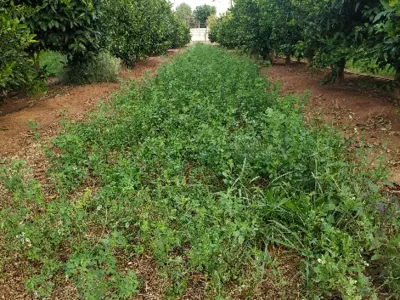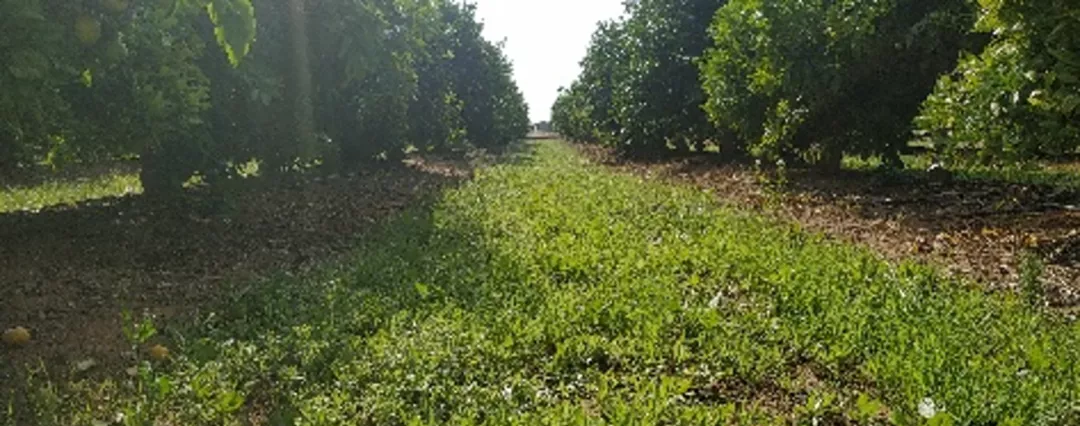General information
RDP Priority
- P2. Competitiveness
RDP Focus Area
- 2A: Farm’s performance, restructuring & modernisation
RDP Measure
- M16: Cooperation
Beneficiary type
- Partnership
Summary
The research project focuses on improving soils in the Valencian autonomous region of Spain. It is a cooperative initiative between three organisations, the Valencian Institute of Agricultural Research, the Cajamar CV Foundation, and the Sueca Cooperative. Previously, the partners examined different soil management practices regarding rice straw mulch and different plant covers. Based on the promising results, the follow-up study was launched aimed at identifying soils in which rice straw mulch could improve fertility and carbon sequestration capacity.
A solar radiation and soil temperature map was produced for the region. The project also produced an additional map identifying the soils which would benefit from rice straw mulch, which was used to zone the territory and identify the best soils for this type of management. The map helps producers make decisions on when to apply more sustainable cultivation techniques that can contribute to the mitigation and adaptation of climate change effects.
Results
- The project resulted in a map identifying those agricultural areas in the Valencia autonomous region where the use of rice straw mulch is recommended. Based on the results obtained, a series of criteria and recommendations were developed to identify the areas in which rice straw mulching would be most effective.
- The project increased know-how by disseminating the results of the project among the scientific community, as well as among the producers of the Valencian autonomous region.

Promoter
Valencian Institute of Agricultural Research (IVIA)
Funding
RDP support: 67 208 (EUR)
EAFRD: 35 620 (EUR)
National/Regional: 31 588 (EUR)
Ressources
Documents
Good Practice Report - Improving soil fertility and carbon sequestration through rice straw mulching
(PDF – 1.62 Mo)
Liens
Context
Agricultural soils in Valencia, Spain, are degrading rapidly due to intensive food production management practices such as mineral fertilisation, poor incorporation of organic matter, and excessive tillage. At the same time, the habit of burning surplus straw in rice cultivation produces undesirable CO2 emissions and serious environmental concerns.
In a global context, there is a clear need to move towards more sustainable forms of agricultural production and to adopt measures that can mitigate and adapt to climate change. The focus on recovering quality, fertile soils, which have a great capacity to capture atmospheric carbon is, thereby, essential.
On this basis, the Valencian Institute of Agricultural Research, the Cajamar Foundation, and the Valencian Cooperative of the Camp Unió Cristiana de Sueca launched an initial, collaborative research project. The aim was to evaluate the capacity of plant cover and mulching to reduce soil erosion, increase soil fertility, promote biodiversity, and assess its effects on the capacity of the soil for atmospheric carbon sequestration.
The research involved two citrus crops and one persimmon plot using different plant covers and mulching with rice straw. The study showed clearly that mulching improved soil porosity, infiltration, and organic matter, and maintained humidity and lower temperatures during summer due to the ability of rice straw to reflect solar radiation.
In response to the positive results of the initial study, the consortium partners sought to extend the monitoring of the plots, develop a Decision Support System (DSS), and determine which soils would be most suitable for these effective practices.
Objectives
The main objective of the project was to develop a DSS-type tool that informs the decision-making process when applying plant covers and rice straw mulching with the aim of improving soil fertility and carbon sequestration capacity in woody crops in the Valencian autonomous region.
The specific objectives focused on evaluating and measuring soil parameters that directly related to the carbon sequestration capacity of the soil, and assessing different soil management strategies to identify those soils where carbon sequestration capacity was increased.
In addition, the study aimed at estimating the solar reflection capacity (albedo) of the surface, and, based on spatial modelling, sought to characterise the energy balance of the soils.
Finally, the research aimed to establish a series of criteria for evaluating the efficiency of rice straw mulching in woody crops, and to provide recommendations facilitating decision-making in the agricultural sector when applying these techniques.
Activities
The project activities involved a number of stages as follows.
- Designing test plots to assess soil parameters related to carbon sequestration and different management strategies to improve sequestration capacity. This involved the design of three experimental citrus cultivation plots, in which the various parameters were assessed. Plant covers included grasses, legumes and spontaneous flora, mulching with rice straw, and mulching with rice straw plus added manure. Each of the three plots was managed by one of the project partners.
- Analysing the development of environmental and soil conditions in the test plots to assess the carbon sequestration capacity. This involved monitoring for changes in parameters related to soil carbon sequestration capacity, such as compaction, water infiltration capacity, organic matter content, and soil fertility.
- Measuring albedo and designing soil temperature maps. Focusing on the soils in the autonomous region of Valencia, this involved measuring the albedo in 63 crop fields. From the data obtained, the temperature maps were drawn using modelling and regression techniques applied to Sentinel 2 satellite images. The albedo maps were calibrated for 35 different types of soils and validated with the control pixels of the experimental plots of the project.
- Designing and developing the decision support system. Based on the produced albedo and soil temperature maps, a recommendation criterion was created to help farmers decide if rice straw mulching could be effective for their soil, based on soil conditions, including temperature and sunlight reflection capacity. Subsequently, a zoning map of the soils of the Valencian community was drawn, showing the areas in which mulching is or is not recommended.
- Carrying out various presentations and dissemination actions throughout project implementation. This activity included online webinars (presenting the DSS-Mulch project via the Earth Platform); participation in the partners' Open Days to promote the project; dissemination actions on social networks; demonstration visits to the experimental plots; designing dissemination material: A5-size leaflets on the DSS-Mulch project distributed at various face-to-face events; various publications including an audio-visual piece in which the main objective of the project was explained; and the publication of two research articles.
Main results
- The project identified management practices that optimally contribute to improving and maintaining soil quality. This was also experimentally corroborated. Compared to other management methods, such as cover with grasses and spontaneous flora or bare soil, legumes and rice straw mulching significantly increase soil organic matter. Rice straw mulch and spontaneous flora coverage have the greatest effect on improving factors such as soil compaction and infiltration.
- A series of maps was produced specifying the albedo and temperature of soils in the Valencian autonomous region. The study found that the effectiveness of straw mulching is dependent on the albedo of the soil. For rice straw mulching to be successful, the soil must have a lower albedo than the rice straw.
- The project resulted in a map identifying those agricultural areas in the Valencia autonomous region where the use of rice straw mulch is recommended. Based on the results obtained, a series of criteria and recommendations have been developed to identify the areas in which rice straw mulching is most effective.
- The project increased know-how by disseminating the results of the project among the scientific community, as well as among the producers of the Valencian autonomous region.
Key lessons
- To maintain soil fertility and health, it is essential to understand the soil and climatic conditions of each plot. However, decisions as to which technique to choose should be guided by research, to prevent potentially counterproductive applications. Research should, therefore, be continually funded to provide practical and accessible knowledge for producers of the primary sector.
- Because funding for projects such as this usually requires a considerable administrative commitment from the applicant, it is advisable to involve experienced partners in your consortium who can complement each other in important areas of expertise.
- Cooperation between organisations with different profiles in these types of initiatives is positive and creates synergies that improve project viability.
- It can be very motivating if and when the funding authorities review progress or final reports and provide feedback to project promoters.
After carrying out the first project, we continued the trial with the same plots, because it seemed interesting to us. We made an extension because, of course, three years is a short time to analyse the problem of carbon sequestration. You must do at least a five-year follow-up, and we made an extension of two more years.
It is a small project, but designed to launch a showcase of strategies that work for farmers to see. A kind of pilot experience. And well, for us scientists, we take advantage of these experiences to have data and then make a publication. But the main idea is more dissemination than research.
